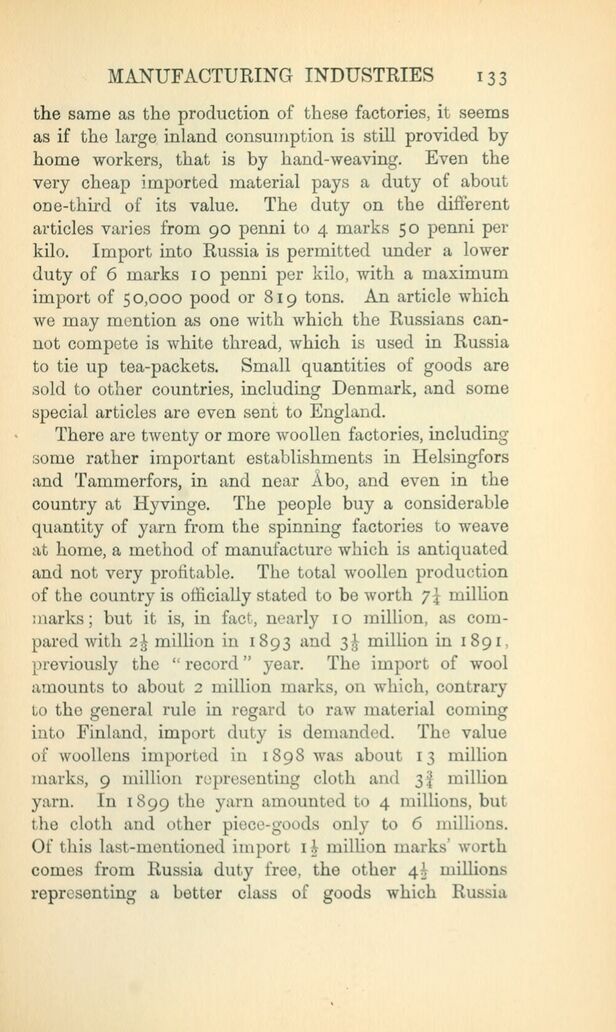
Full resolution (JPEG) - On this page / på denna sida - VI. Mining and Manufacturing Industries

<< prev. page << föreg. sida << >> nästa sida >> next page >>
Below is the raw OCR text
from the above scanned image.
Do you see an error? Proofread the page now!
Här nedan syns maskintolkade texten från faksimilbilden ovan.
Ser du något fel? Korrekturläs sidan nu!
This page has been proofread at least once.
(diff)
(history)
Denna sida har korrekturlästs minst en gång.
(skillnad)
(historik)
the same as the production of these factories, it seems
as if the large inland consumption is still provided by
home workers, that is by hand-weaving. Even the
very cheap imported material pays a duty of about
one-third of its value. The duty on the different
articles varies from 90 penni to 4 marks 50 penni per
kilo. Import into Russia is permitted under a lower
duty of 6 marks 10 penni per kilo, with a maximum
import of 50,000 pood or 819 tons. An article which
we may mention as one with which the Russians
cannot compete is white thread, which is used in Russia
to tie up tea-packets. Small quantities of goods are
sold to other countries, including Denmark, and some
special articles are even sent to England.
There are twenty or more woollen factories, including
some rather important establishments in Helsingfors
and Tammerfors, in and near Åbo, and even in the
country at Hyvinge. The people buy a considerable
quantity of yarn from the spinning factories to weave
at home, a method of manufacture which is antiquated
and not very profitable. The total woollen production
of the country is officially stated to be worth 7¼ million
marks; but it is, in fact, nearly 10 million, as
compared with 2⅓ million in 1893 and 3⅓ million in 1891,
previously the “record” year. The import of wool
amounts to about 2 million marks, on which, contrary
to the general rule in regard to raw material coming
into Finland, import duty is demanded. The value
of woollens imported in 1898 was about 13 million
marks, 9 million representing cloth and 3¾ million
yarn. In 1899 the yarn amounted to 4 millions, but
the cloth and other piece-goods only to 6 millions.
Of this last-mentioned import 11 million marks’ worth
comes from Russia duty free, the other 4½ millions
representing a better class of goods which Russia
<< prev. page << föreg. sida << >> nästa sida >> next page >>